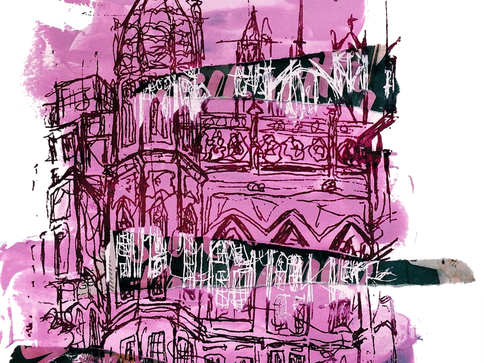

Issue III
On Friday, February 15th, I stood in Bonn Square, a normally sleepy public plaza outside of Oxford’s central shopping mall, which was on that day overwhelmed with a surging mass of teens and children, some standing on trash cans or benches. The crowd was gathered as part of a national day of action to protest climate change; in more than 60 different cities around the United Kingdom, students of all ages walked out of school, in the tradition of Greta Thunberg’s weekly, solitary school strikes for climate change. As I wove through the crowd to interview young activists for a piece I was writing about the protests, I couldn’t help but feel emotional. Seeing so many teen activists, some nearly a decade younger than me, humbled me in a way I did not anticipate.
I came across a poem recently that spoke, in many ways, to what it felt like to stand in that crowd. The poet, Maggie Smith, talks about trying to share a world that she knows is “at least/ fifty percent terrible” with her children, concluding the poem with these cynical and hopeful ending lines:
“Any decent realtor,
walking you through a real shithole, chirps on about
good bones: This place could be beautiful,
right? You could make this place beautiful.”
The responsibility our generation carries for ourselves, and for the future, is formidable. For this third issue of Anthroposphere, we have tried to collect stories about the multitude of transformations that are taking place in this time of upheaval. In these pages you’ll find stories of energy transformations, of the politics of melting Antarctic ice, of the scientists studying the great barrier reef, and much more. We are always looking for new lenses through which to see this multidimensional problem; after all, climate change is less an event than a condition under which we are all trying to continue, and its fingerprints can be found in almost every part of our human and natural worlds. Perhaps better examining these fingerprints can help us find a collective way forward, and dwell in that hopeful aspiration of parents and realtors.
There are good bones here, too.
Get Issue III in print here
All proceeds go towards printing, designing and maintaining our publication, and your contributions will help keep our climate journalism interdisciplinary and accessible for all.
scroll
Editors-in-Chief
Nuala Burnett
Catherine Chang
Alexandria Herr
Ming Zee Tee
Sub-Editors
Lily Begg
Benedict Gardner
Sophie Gill
Daniel Judt
Josh Lappen
Rachel Qiu Kexin
Vaishali Rawat
Jonathon Turnbull
Art Director
Megan Jones
Artists
Jess Baker
Abigail Hodges
Julia Jones
Ann-Kathrin Görisch
Sapphire Deanna Vital








































